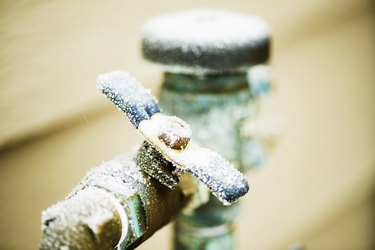Were you trying to locate info around How to Prevent Your Pipes From Freezing?

Winter can ruin your plumbing, particularly by freezing pipes. Right here's just how to prevent it from occurring and what to do if it does.
Introduction
As temperatures decline, the risk of icy pipelines increases, possibly resulting in expensive repairs and water damages. Understanding just how to stop icy pipes is critical for house owners in cool climates.
Understanding Icy Pipelines
What creates pipes to freeze?
Pipes ice up when revealed to temperature levels below 32 ° F (0 ° C) for extended periods. As water inside the pipelines freezes, it expands, taxing the pipe wall surfaces and potentially creating them to rupture.
Dangers and damages
Icy pipelines can lead to supply of water disturbances, home damages, and costly repairs. Ruptured pipelines can flood homes and cause considerable structural damages.
Signs of Frozen Pipes
Recognizing frozen pipes early can prevent them from bursting.
How to identify frozen pipes
Search for lowered water flow from faucets, uncommon smells or noises from pipelines, and noticeable frost on exposed pipelines.
Avoidance Tips
Shielding vulnerable pipes
Wrap pipelines in insulation sleeves or make use of warmth tape to shield them from freezing temperature levels. Focus on pipes in unheated or outside locations of the home.
Home heating strategies
Keep indoor areas effectively heated, particularly locations with pipes. Open up cupboard doors to allow warm air to distribute around pipes under sinks.
Securing Outdoor Plumbing
Yard hose pipes and outside faucets
Separate and drain pipes garden hoses before winter. Install frost-proof spigots or cover outside faucets with insulated caps.
What to Do If Your Pipelines Freeze
Immediate activities to take
If you think icy pipes, maintain taps open up to ease pressure as the ice thaws. Make use of a hairdryer or towels soaked in hot water to thaw pipes gradually.
Long-Term Solutions
Structural adjustments
Take into consideration rerouting pipelines away from outside wall surfaces or unheated areas. Add additional insulation to attic rooms, basements, and crawl spaces.
Upgrading insulation
Invest in high-grade insulation for pipes, attics, and wall surfaces. Correct insulation helps maintain constant temperatures and reduces the threat of icy pipes.
Conclusion
Stopping frozen pipelines needs positive actions and fast responses. By recognizing the causes, indicators, and safety nets, home owners can shield their plumbing throughout winter.
5 Ways to Prevent Frozen Pipes
Drain Outdoor Faucets and Disconnect Hoses
First, close the shut-off valve that controls the flow of water in the pipe to your outdoor faucet. Then, head outside to disconnect and drain your hose and open the outdoor faucet to allow the water to completely drain out of the line. Turn off the faucet when done. Finally, head back to the shut-off valve and drain the remaining water inside the pipe into a bucket or container. Additionally, if you have a home irrigation system, you should consider hiring an expert to clear the system of water each year.
Insulate Pipes
One of the best and most cost-effective methods for preventing frozen water pipes is to wrap your pipes with insulation. This is especially important for areas in your home that aren’t exposed to heat, such as an attic. We suggest using foam sleeves, which can typically be found at your local hardware store.
Keep Heat Running at 65
Your pipes are located inside your walls, and the temperature there is much colder than the rest of the house. To prevent your pipes from freezing, The Insurance Information Institute suggests that you keep your home heated to at least 65 degrees, even when traveling. You may want to invest in smart devices that can keep an eye on the temperature in your home while you’re away.
Leave Water Dripping
Moving water — even a small trickle — can prevent ice from forming inside your pipes. When freezing temps are imminent, start a drip of water from all faucets that serve exposed pipes. Leaving a few faucets running will also help relieve pressure inside the pipes and help prevent a rupture if the water inside freezes.
Open Cupboard Doors
Warm your kitchen and bathroom pipes by opening cupboards and vanities. You should also leave your interior doors ajar to help warm air circulate evenly throughout your home.

I was made aware of that editorial about Prevent Frozen Pipes from an acquaintance on our other site. If you liked our blog posting if you please remember to share it. Thanks so much for taking the time to read it.
Customer Reviews